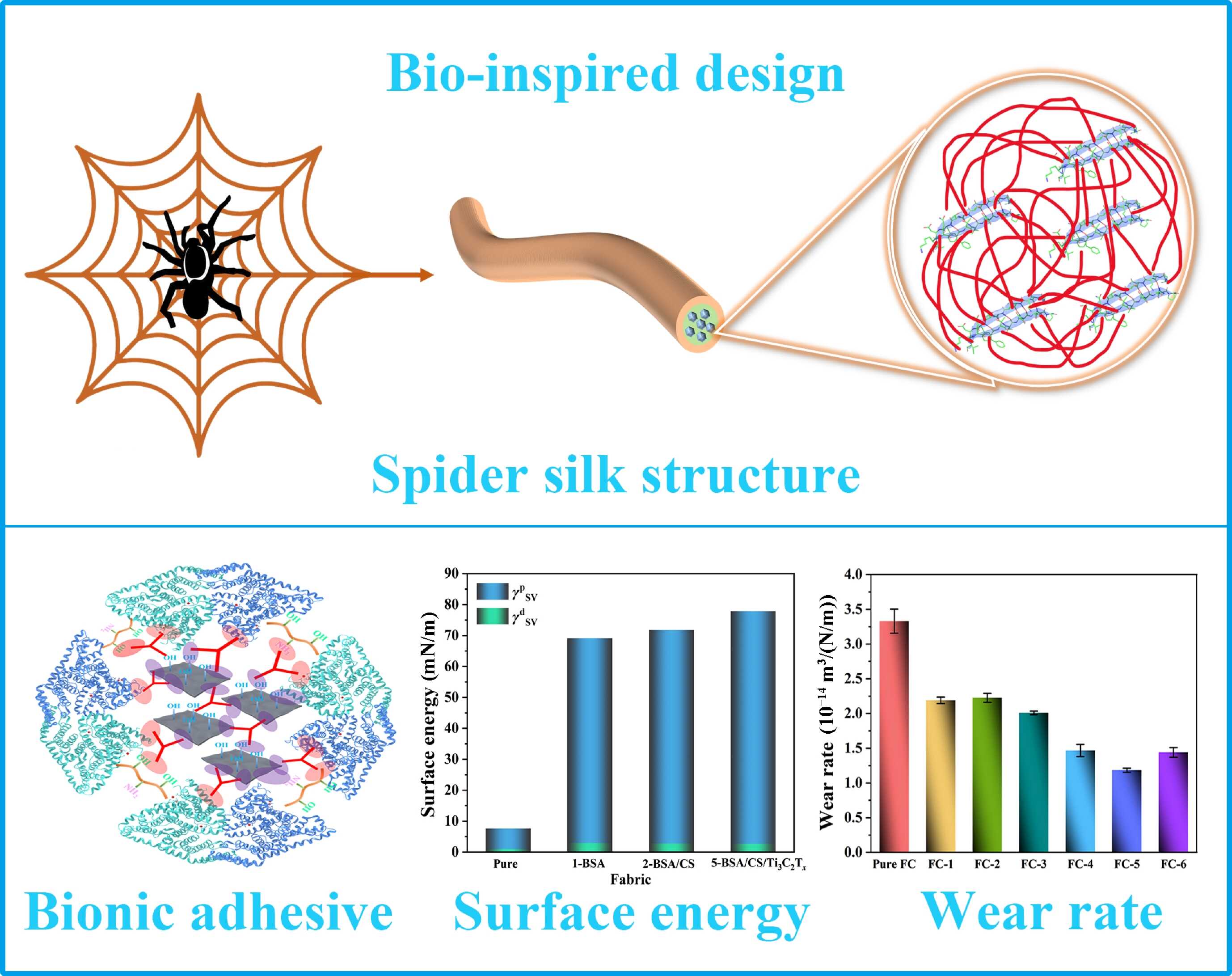Abstract
The interfacial adhesion between fibers and the resin matrix is considered to be one of the pivotal elements in determining the comprehensive properties of fabric composites. After years of study and development, it is still challenging to find simple and effective approaches for interfacial modification. Here, inspired by the spider silk structure of nature, an efficient and green bionic system was investigated to fabricate a high-performance bovine serum albumin (BSA) adhesive through the introduction of chitosan and Ti3C2Tx nanosheets in BSA. The Ti3C2Tx nanosheets act as beta-sheet nanocrystals in the biomimetic spider silk structure, contributing to the creation of a closely cross-linking adhesive system. The results indicate that the wettability and surface activity of the fibers are significantly enhanced by the BSA adhesive modification, which efficiently increases the interfacial properties. Compared with those of the virgin fabric composites, the bonding and tensile strength of the strengthened fabric composites increase by 82% and 46.2%, respectively. In addition, the strengthened fabric composites have excellent anti-wear performance, with a 62.6% reduction in the wear rate. This paper provides novel ideas for applying biomass adhesives in tribology.

Keywords Plus:ELECTROCHEMICAL SURFACE MODIFICATION,CARBON-FIBERS
Published in FRICTION,Volume13;10.26599/FRICT.2025.9440914,MAR 2025


